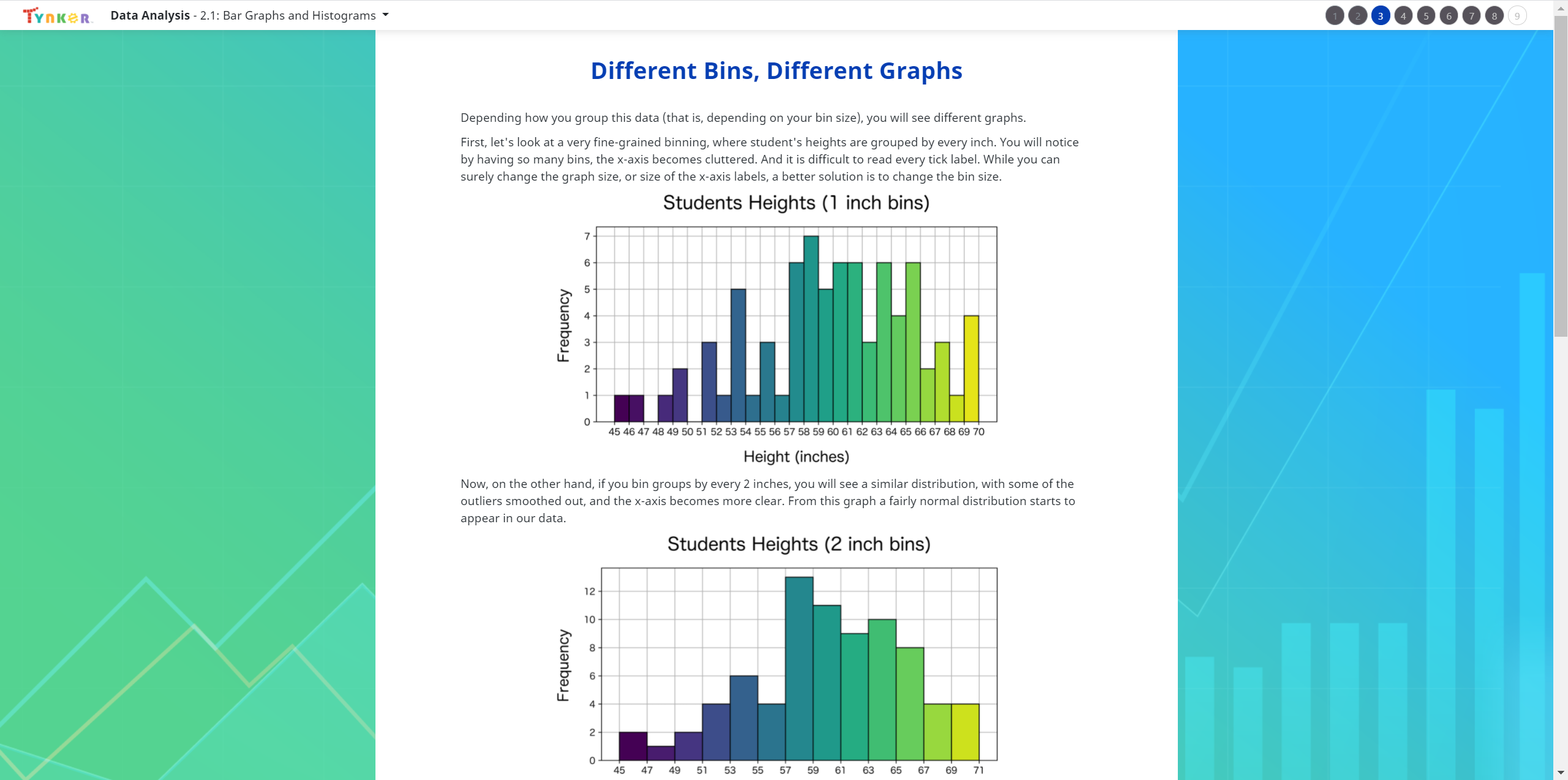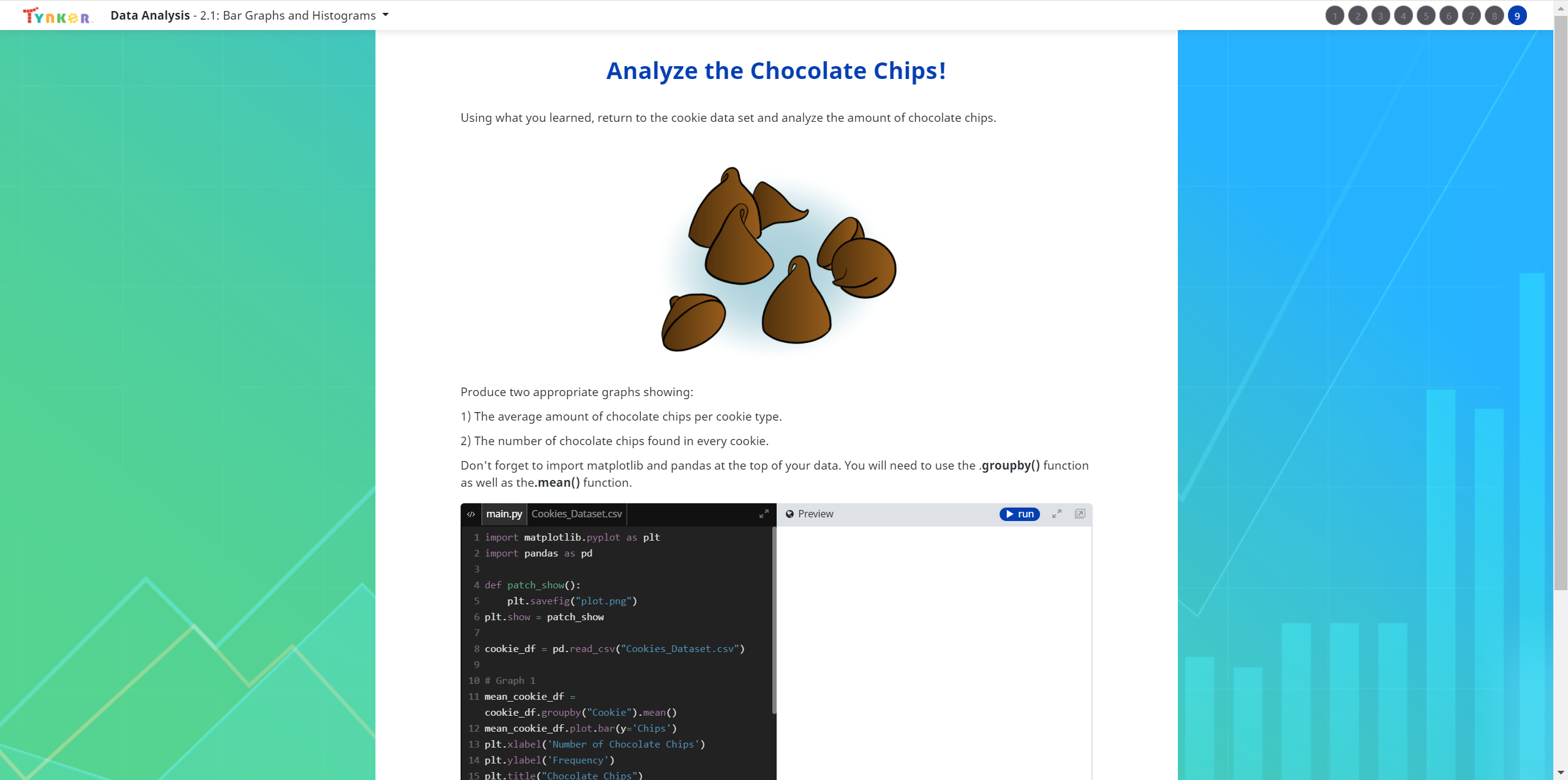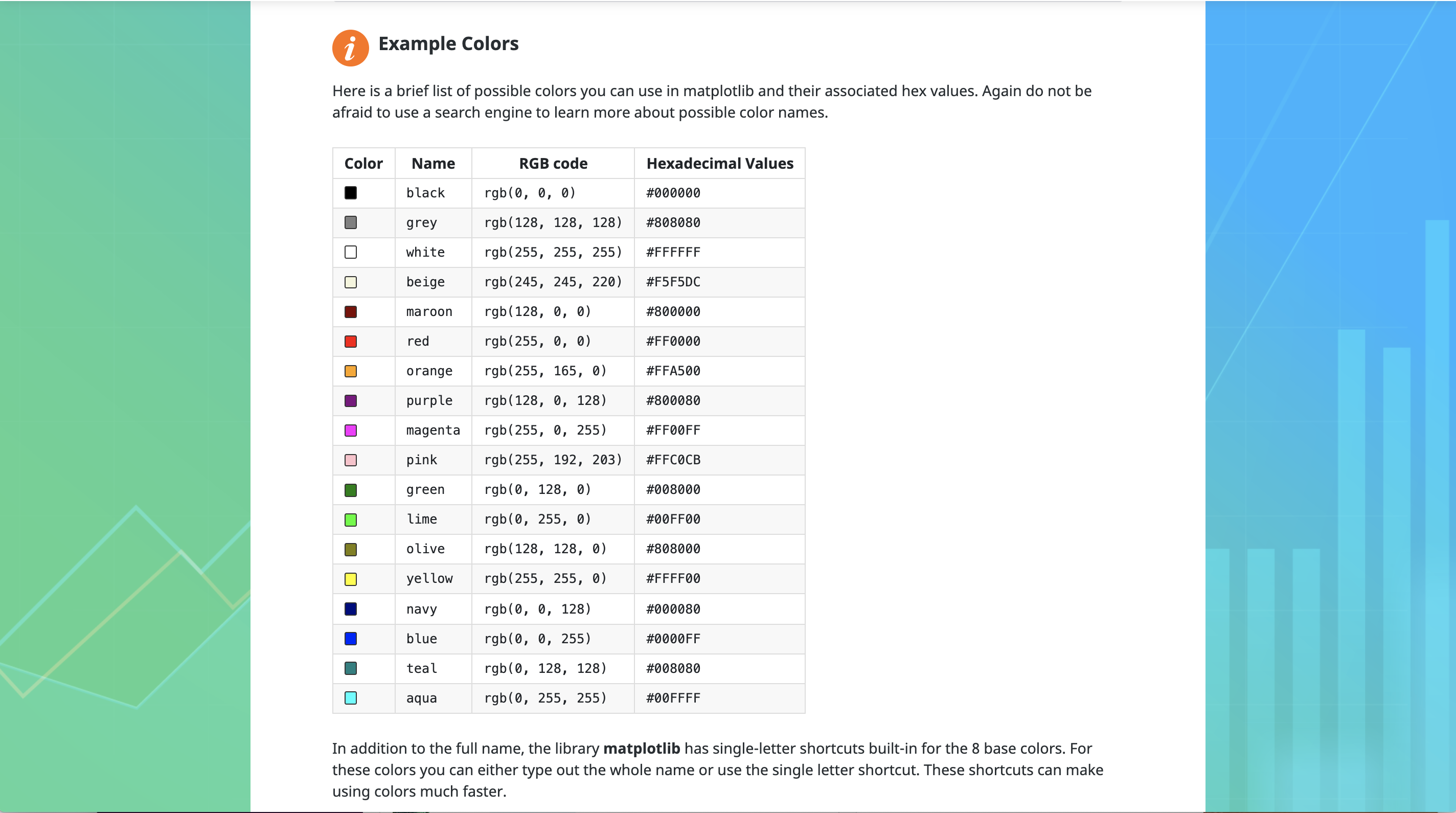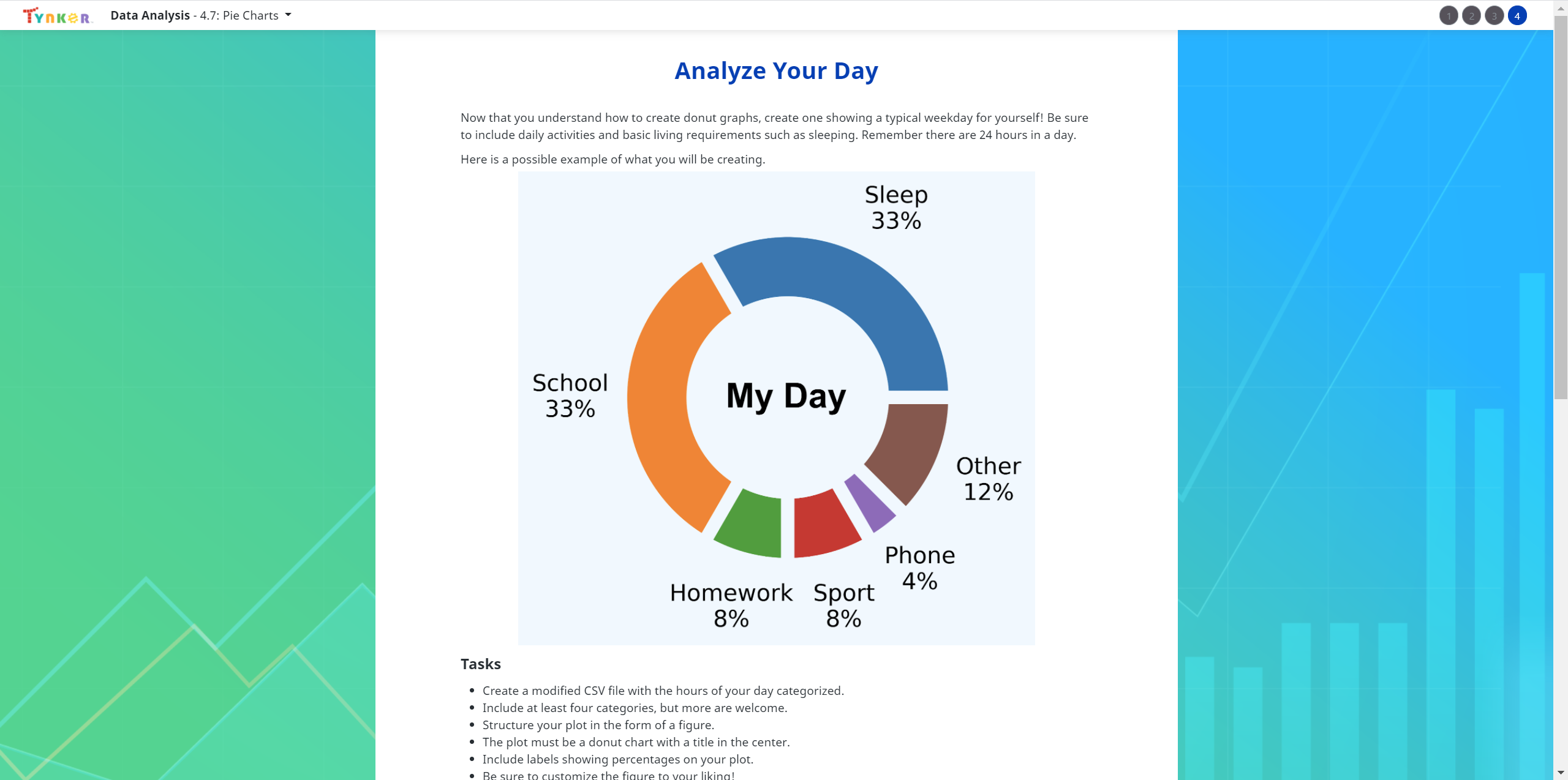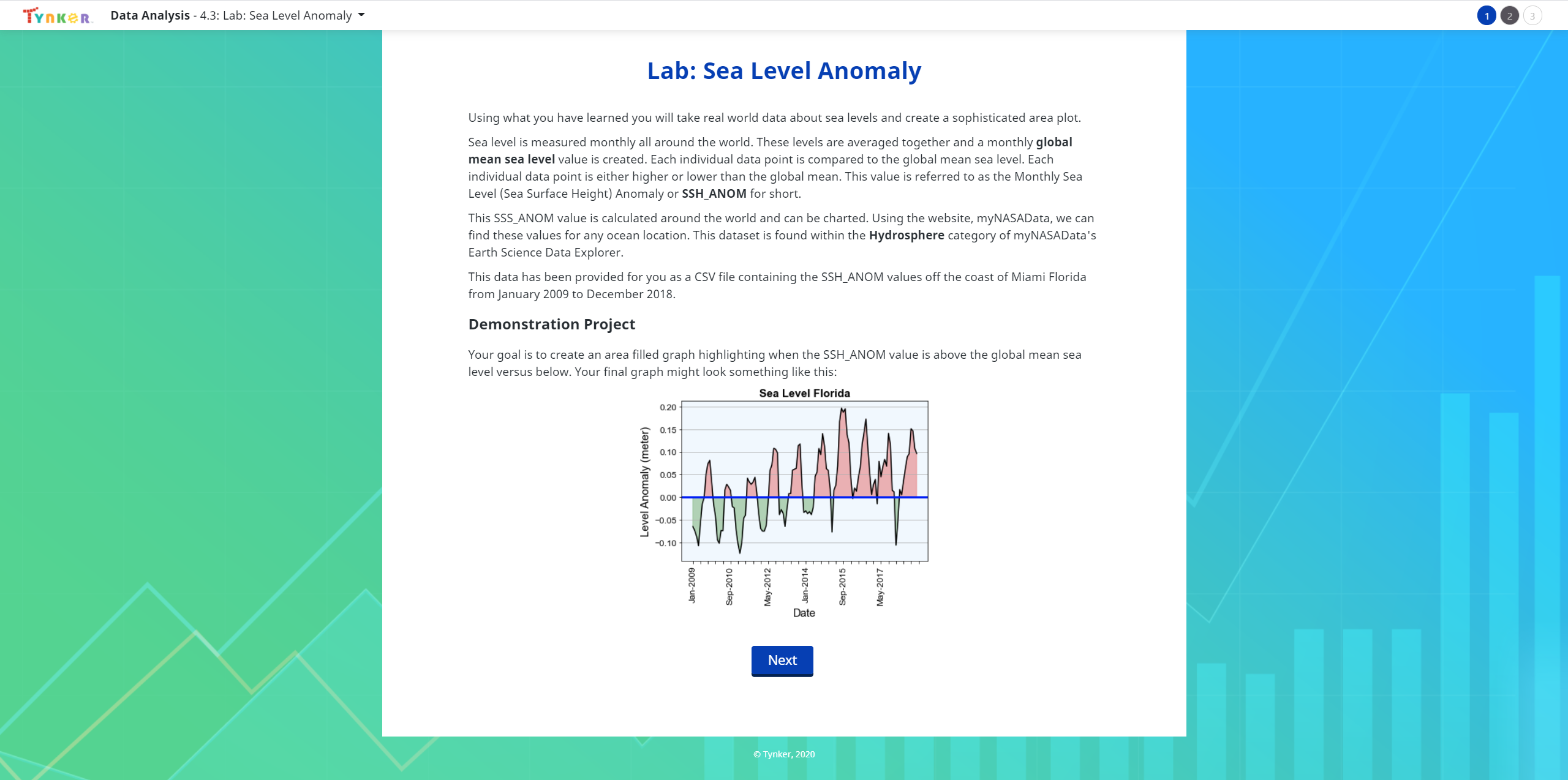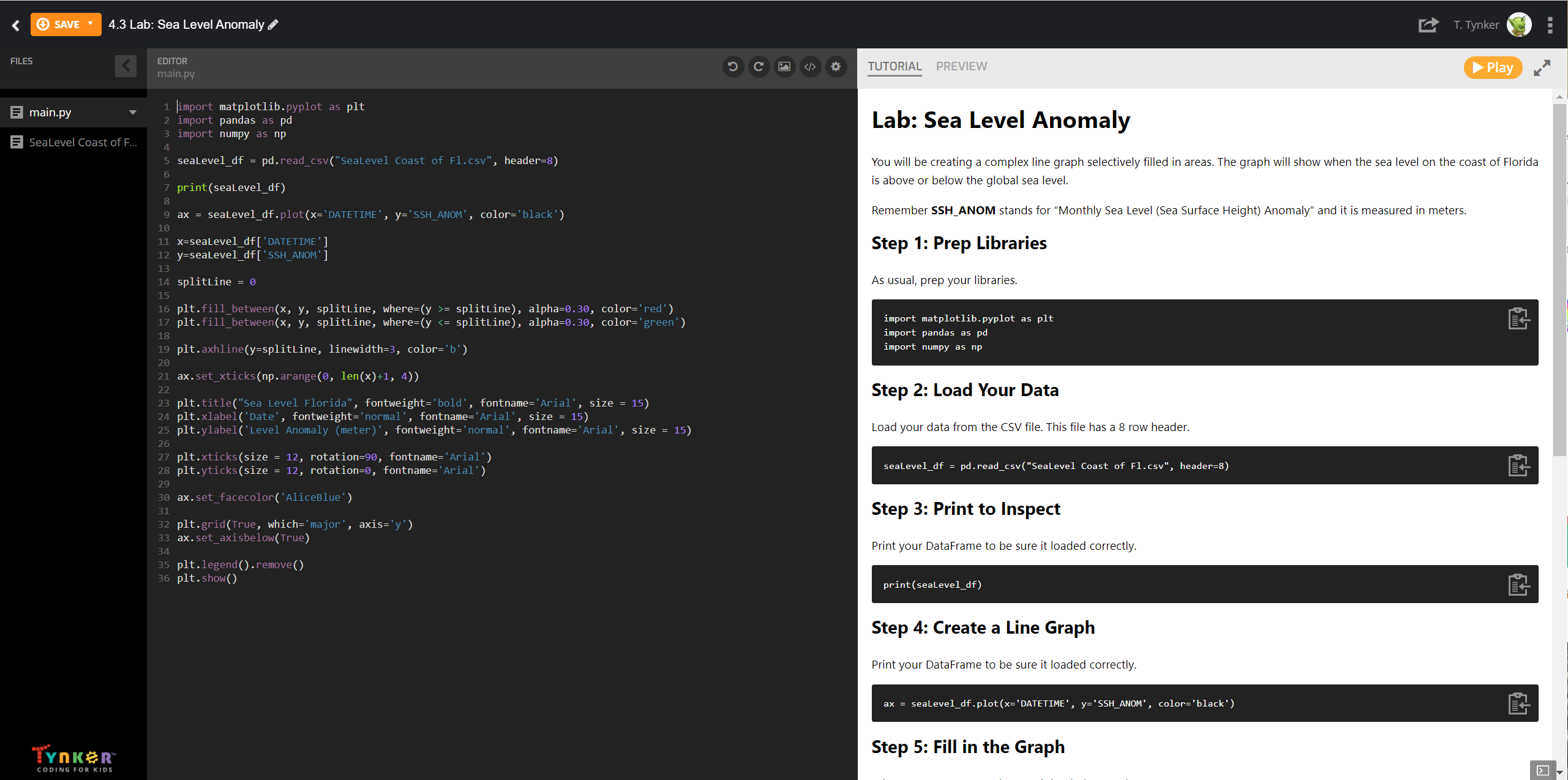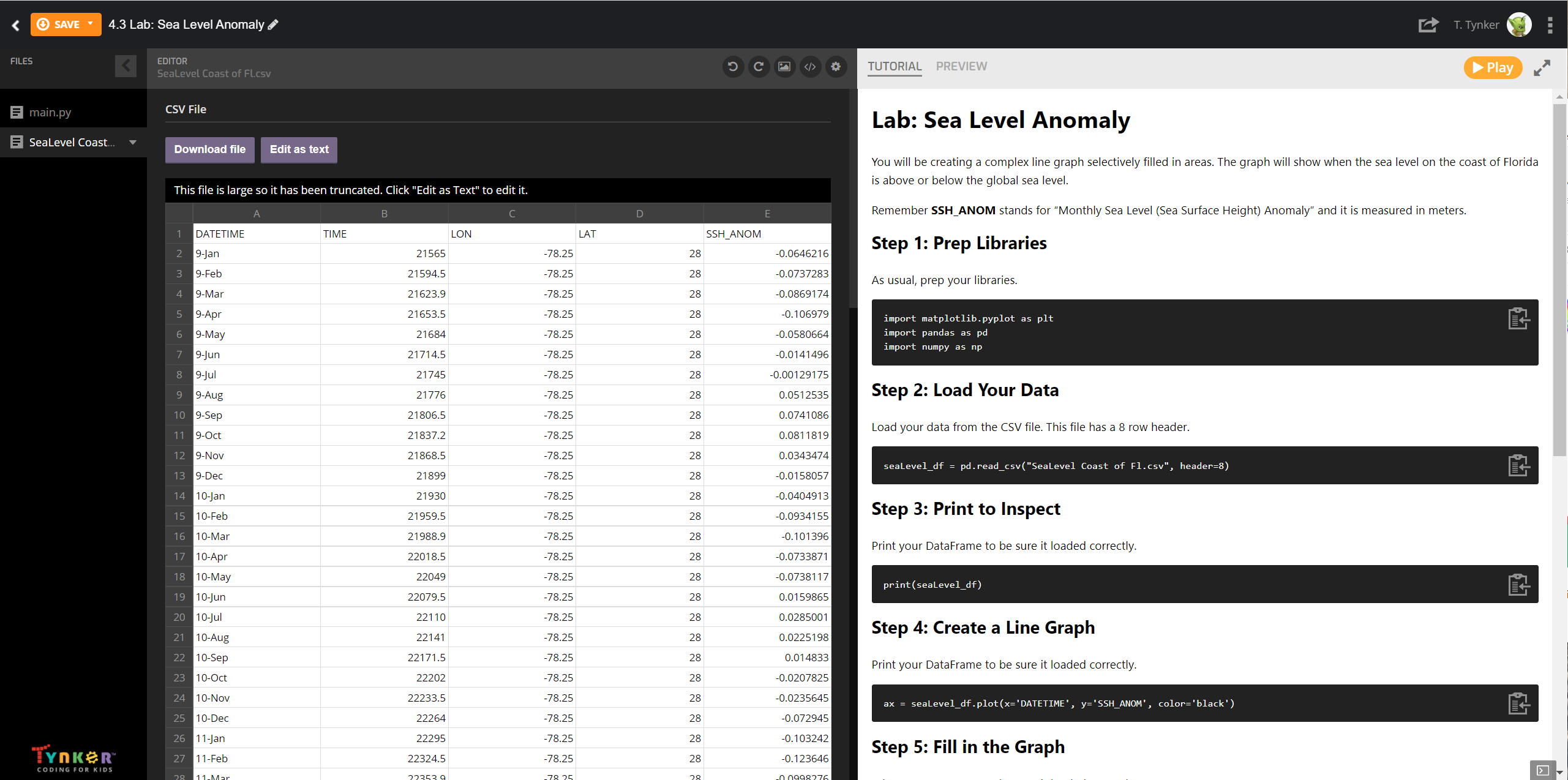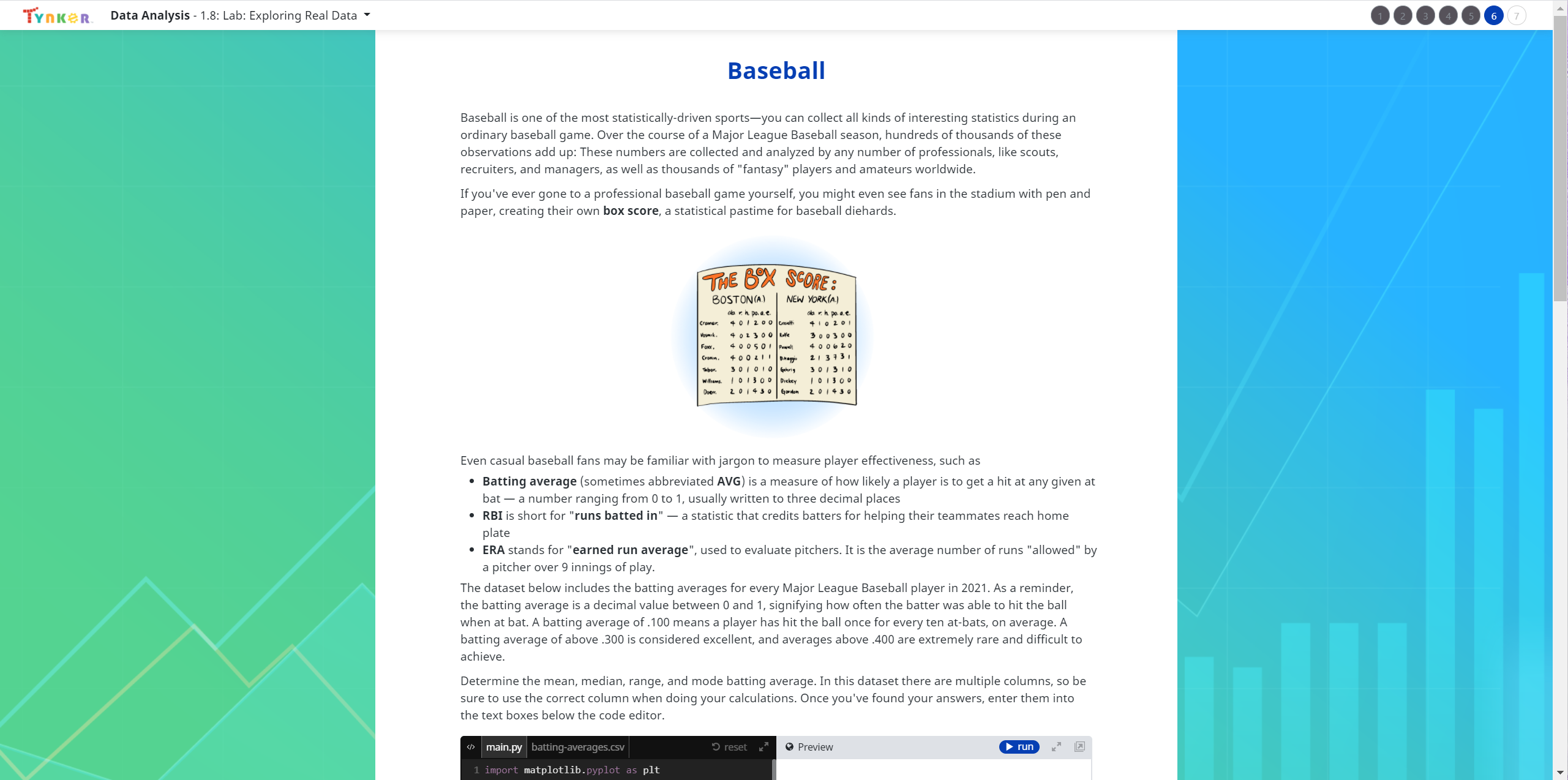true
Answer Key
No answer keys for this section.
Standards
No standards for this section.
Unit 5: Capstone Project
Put your data skills to the test in this open-ended coding challenge.
Description
Explore data in areas such as science, sports, politics, climate change, and much more!
Data is everywhere around us, transforming our world. The applications are countless: the world of Moneyball and sports statistics, archeologists discovering hidden civilizations with LiDAR data, climate scientists tracking temperature change and polar ice melt—data science and our data-driven world are bringing exciting insights, discoveries, and analysis to bear in almost every field imaginable.
In this introductory course, students will learn how to interrogate a data set, just like a data pro, then make their own conclusions. Students will:
- Learn how to make use of Python, the most popular language for data science
- Understand different types of data (categorical vs. numerical) as well as statistical analysis
- Model how things work, using data! Make a prediction, then test the results
- Create their own, original graphs and visualizations
- Learn the strengths and weaknesses of different visualization types: And how to filter, clean, and interpret data
- Apply basic statistical concepts like mean, median, mode, and standard deviation
- Learn the industry-standard Data Science libraries: numpy, pandas, and matplotlib
Whether they're curious about data journalism, science, or just want to tell a story with data, this course is a fast and fun way to get started. Learn more about becoming a Data Scientist, sometimes called "America's Hottest Job," and explore a variety of real-world, hands-on labs.
Previous Python programming experience is recommended but not strictly necessary (complete Tynker's Python 101, or Tynker's AP CS Principles). The only prerequisite is Algebra 1.
Topics
- Python basics
- Loops
- Functions
- Expressions
- Operators
- Data types
- Variables
- Lists
- matplotlib
- numpy
- pandas
What Students Learn
- Analyze and Categorize Data
- Visualize Data with numpy, matplotlib, and Python
- Manipulate Datasets Using pandas
- Use Statistics
- Create Complex Charts and Figures
- Draw Conclusions
Technical Requirements
* Online courses require a modern desktop computer, laptop computer, Chromebook, or Netbook with Internet access and a Chrome (29+), Firefox (30+), Safari (7+), or Edge (20+) browser. No downloads required.
